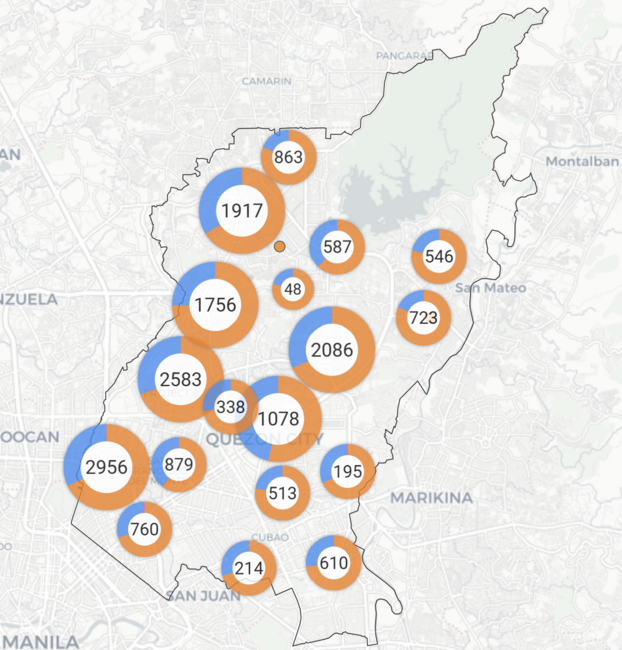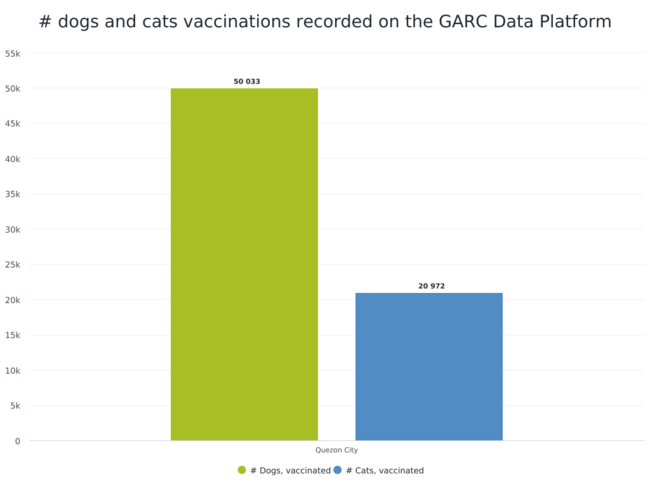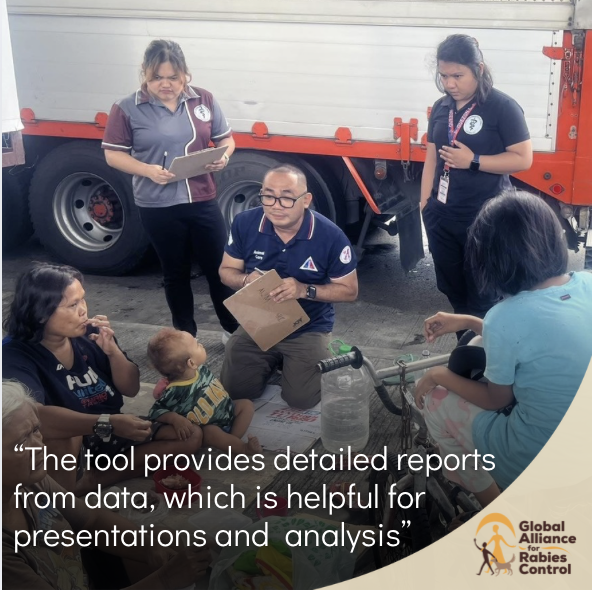June 2025: GARC Data Platform Featured User
This June, GARC is focusing on vaccination as a way to eliminate rabies for everyone. This month’s featured GARC Data Platform user is Quezon City Veterinary Department, Philippines. They believe veterinary services are essential and should be considered as a part of basic service delivery to the community.
Their services include:
- preventing rabies through mass vaccination, and spay-and-neuter programs,
- regulating animal ownership and sales,
- managing abattoir sanitation,
- inspecting meat,
- overseeing animal slaughter and disposal, and controlling dangerous zoonotic diseases.
Quezon City Veterinary Clinic’s mission statement:
To enhance, support, and promote animal health, animal welfare, public health, and food security.
Quezon City Veterinary Department has been using the GARC Data Platform since 2023 and have vaccinated an impressive number of animals since then. They are a small team working across multiple areas and communities. Due to the number of vaccination campaigns that they have already completed, recording the data on the Platform is an ongoing endeavour.
GARC Data Platform helping Quezon City Veterinary Clinic to record vaccinations since 2023 across six districts:
- Of the 142,332 animals vaccinated, 72,787 already recorded
- Of the 4,997 sterilizations, 433 already recorded.


1. Briefly explain rabies-related work you do.
The Quezon City Veterinary Department is responsible for monitoring and preventing rabies cases in Quezon City.
2. How long have you used the GARC Data Platform?
We have been using the GARC Platform since 2023.
3. What benefits have the GARC Tools provided you?
The GARC Tools enables us to closely monitor cases of rabies all throughout the city. It also enables us to record and monitor the number of vaccinated animals against rabies.
4. Which of the GARC Tools have been most beneficial to your work and why?
We really benefit from the Rabies Case Surveillance. The tool allows us to monitor the confirmed number of rabies cases in our city. It also allows us to map out the proximity of the cases to each other, providing us with information on how to tackle and control the further spread of the disease. It also provides detailed reports regarding the encoded data, which is helpful for presentations and data analysis.
